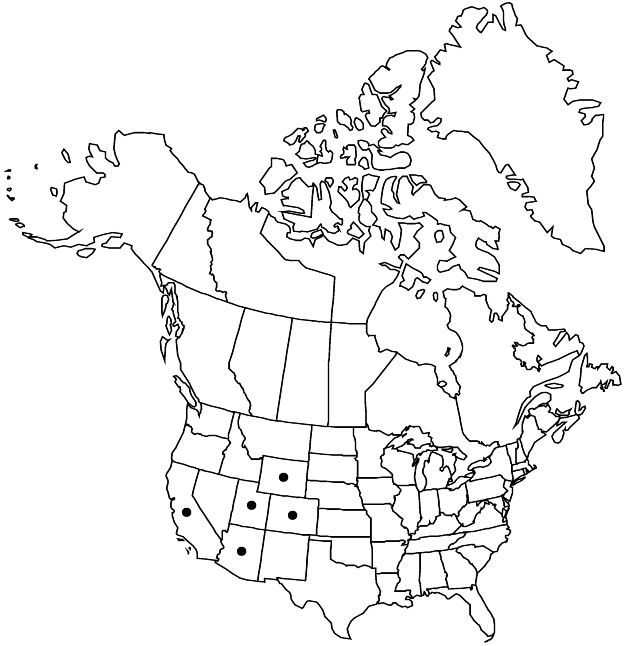Amelanchier alnifolia var. pumila
Ill. Handb. Laubholzk. 1: 739. 1906.
Shrubs, 1–2(–4) m. Stems 1–50, solitary or in colonies. Leaves: petiole (7–)11.9–19.1(–27) mm; blade orbiculate to oval, (14–)26–37(–50) × (18–)23–36(–43) mm, base usually cordate to truncate, sometimes ± cuneate, apex rounded or subtruncate, surfaces glabrous. Inflorescences (6 or)7–9(–12)-flowered, (24–)29–40(–47) mm. Pedicels proximalmost (8–)10–20(–27) mm. Flowers: sepals (2.7–)3.2–4(–4.5) mm; petals obovate to elliptic, (9–)10.9–11.5(–12.6) × (3–)3.8–5.2(–5.9) mm; ovary apex glabrous (or sparsely hairy with a ring of hairs at base of styles). Pomes 8–9 mm diam. 2n = 4x.
Phenology: Flowering May–Jun; fruiting Jul–Sep.
Habitat: Mountain slopes
Elevation: 2000–3400 m
Distribution

Ariz., Calif., Colo., Utah, Wyo.
Discussion
The most distinctive features of var. pumila are that its leaves, pedicels, sepals, and ovary apices are glabrous (with the exception of a few hairs on emerging leaves and a ring of hairs around the base of the styles in some plants), and its leaf teeth are relatively long and sharp-pointed. This variety appears to be restricted to higher elevations.
Selected References
None.